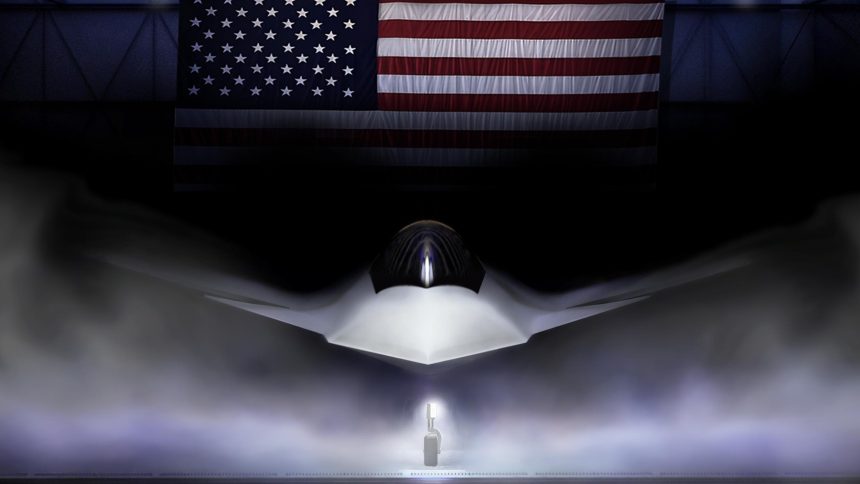The images showing the F-47 have been heavily edited and may not hold any resemblance to the real aircraft.
The two existing images of the Boeing F-47 Next Generation Air Dominance aircraft have been heavily edited to hide most, if not all, of its real design features, according to U.S. Air Force and industry officials who spoke with Air & Space Forces Magazine. While the two images already showed only a small portion of the jet, the service wanted to keep adversaries guessing about the true design.
Edited images
We already mentioned, when the images were released after the selection of Boeing’s design, that we couldn’t completely rule out that these were still somewhat notional designs, especially since President Trump and Air Force Chief of Staff Gen. Allvin mentioned they didn’t want to give out many details. Now we finally have confirmation about this.
In fact, an Air Force official said these images should be “taken with a large grain of salt,” adding “We aren’t giving anything away in those pictures.” Addressing the wait for the aircraft to be unveiled, the officer said “You’ll have to be patient,” even mentioning “Is there a resemblance? Maybe.”
According to Air & Space Forces Magazine, even before the announcement of the F-47’s selection, “Boeing artists produced images that already deliberately distorted some of the NGAD’s features.” The U.S. Air Force later “further altered them.”
This way, we now have confirmation about what we wrote in previous articles, mentioning that maybe some features might have been voluntarily added to throw off foreign intelligence. Therefore, the final F-47 might also be completely different from what has been shown so far.
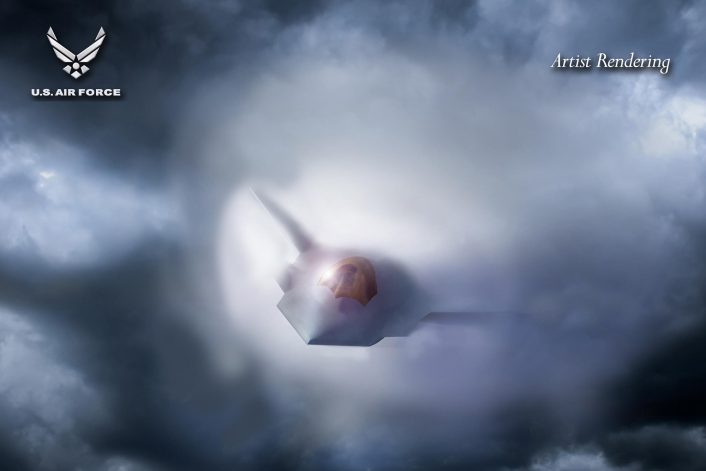
Previous instances
This is not the first time the U.S. Air Force edits images of new aircraft to not give adversaries information about the design ahead of the first public sighting. The first example of this was the B-2 Spirit stealth bomber, with the service releasing an image, in April 1988, that blurred the exhaust and showed the aircraft in a way that prevented to identify many real features.
Later that year, in November, the Air Force released a heavily edited image of the then-secret F-117 Nighthawk. The image, similarly to the B-2, many features of the aircraft were disguised, and the public only discovered the real appearance of the F-117 in 1990, when the service fully unveiled it.
The next example was the F-22 Raptor, with a fictional delta-wing aircraft with canards showed by Lockheed Martin throughout the Advanced Tactical Fighter competition. Only in 1990, when the YF-22 was rolled out, the real aircraft was revealed to the public.
The last example before the F-47 is rather recent, as it was the B-21. In fact, the first rendering of the B-21, in 2016, obscured many features, like intakes and exhaust, and made it difficult to determine size and real planform. Some more details were revealed with the new images in 2021 and the rollout in 2022, with the remaining details about the external appearance of the new aircraft unveiled only in occasion of the first flight.
The two images
Here is what we previously wrote about the two images of the F-47:
For the announcement of the contract award, two images have been released and shown during the briefing in the Oval Office. One of them shows the F-47 emerging from the shadows of a hangar, while the other shows it in flight, surrounded by the vapor cone that often forms around an aircraft when it approaches transonic speeds.
The design appears to have inherited some features from Boeing’s YF-118G Bird of Prey technology demonstrator developed in the 1990s. Among these are the wing dihedral and the shovel-like nose, which give the F-47 an interesting look which is quite different from previous designs.
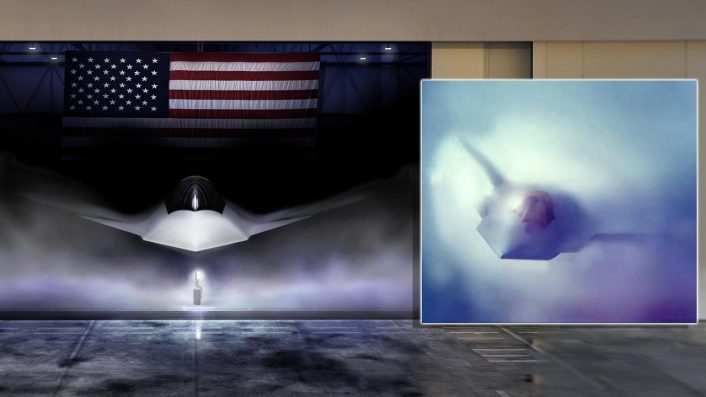
Surprisingly, the aircraft appears to feature a canard configuration, as foreplanes are visible beside the cockpit, following the wing’s dihedral angle. Canard configurations have often been judged as the “enemy” of low observability. The reasons for this choice could reside in a need for a better maneuverability and stability.
The two images emerged so far do not allow to discern the planform of the aircraft, the tail configuration and details about the engines. Given the canard configuration, Boeing might have opted for a tailless design, with a delta, lambda or cranked arrow being the most likely wing planforms, although they are not usually associated with a pronounced dihedral.
Considering how the aircraft is shown in the images, there is no way to discern the number of engines and the location of the air inlets. All the notional renderings shown the NGAD aircraft as a twin engine fighter, with the inlets on the underside.
X-planes
In another bit of information released few days after the selection of the F-47, DARPA (Defense Advanced Research Projects Agency) has provided details about the origins of the program with a short press release.
“Under research and development contracts with DARPA, Boeing and Lockheed Martin designed two X-planes as risk reduction for the Next Generation Air Dominance (NGAD) Platform,” mentioned the press release. “These aircraft first flew in 2019 and 2022, logging several hundred hours each.”
Boeing’s aircraft, which first flew in 2019, therefore appears to be the full-scale flight demonstrator that Dr. Will Roper, then Assistant Secretary of the Air Force for Acquisition, Technology and Logistics, announced in 2020. “We’ve already built and flown a full-scale flight demonstrator in the real world, and we broke records in doing it,” Roper said during the Air, Space and Cyber Conference 2020.
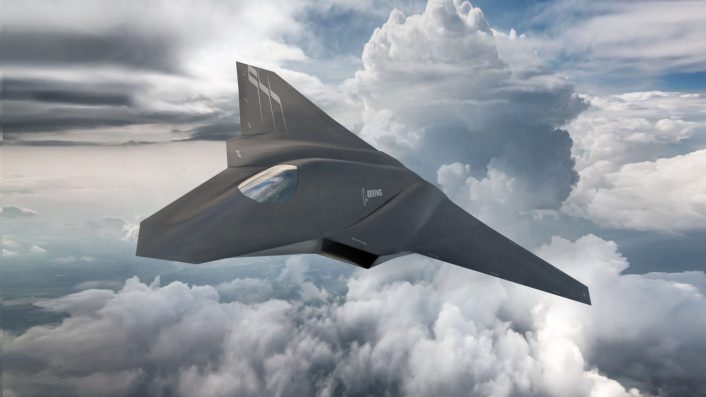
As for the second X-plane, the Lockheed Martin demonstrator which flew in 2022, this is the first time it is officially mentioned. However, the then Air Force Secretary Frank Kendall revealed in 2023 that a secret, multi-agency X-plane program paved the way for NGAD and, although he didn’t mention the number of demonstrators involved, it was understood they were more than one.
To describe the effort behind the two demonstrators, DARPA quoted the statement from Chief of Staff of the Air Force Gen. David Allvin: “For the past five years, the X-planes for this aircraft have been quietly laying the foundation for the F-47 — flying hundreds of hours, testing cutting-edge concepts, and proving that we can push the envelope of technology with confidence.”
Best Overall Value
According to a service spokesperson, the Air Force made the selection for NGAD based on “best overall value.” In fact, the spokesperson told Air & Space Forces Magazine that Boeing’s proposal was selected because it “represents the best overall value to the government and is best suited to fulfill the Air Force’s requirements.”
The details about what the “best overall value” meant are unknown, but could be many. The service said it “will not release additional details relative to the proposal,” but given the high profile of the contract, it is no surprise that the selection was not made on the lowest price.
Similarly, the details about the Engineering and Manufacturing Development (EMD) contract are also limited. The Air Force only disclosed that the EMD contract includes “maturing and testing all aspects of the F-47,” and it “will produce a small number of test aircraft for evaluation.”
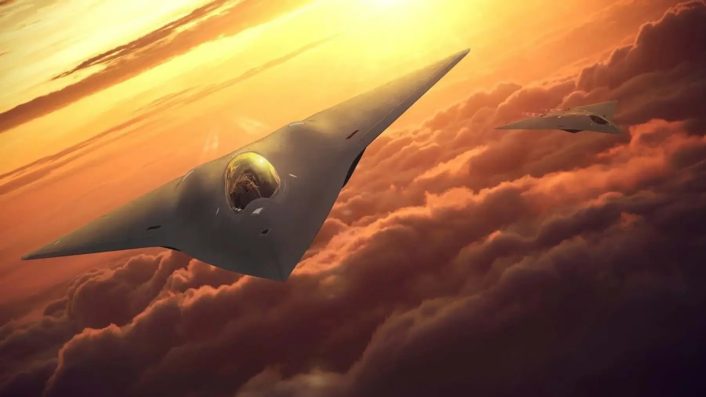
Kendall’s and Hunter’s revelations
Former Secretary of the Air Force Frank Kendall and former Assistant Secretary of the Air Force for Acquisition, Technology & Logistics Andrew Hunter talked about the F-47 and the NGAD program with the Defense & Aerospace Report‘s Air Power Podcast in March. Kendall has a long experience with NGAD, as he was the Under Secretary of Defense for Acquisition, Technology and Logistics who launched the Aerospace Innovation Initiative with DARPA.
The $1 billion program was led by DARPA, but included both the Air Force and Navy. In fact, both services later launched their own NGAD programs, bearing both similarities and differences.
The services were after “certain desirable characteristics,” but a final configuration was not finalized. The X-planes mentioned in the past by Kendall were meant “to prove out the more risky and important technologies we were after,” he said.
Today it is still unclear what really defines a sixth-generation aircraft, and, in fact, the program was also meant to help with that. “Their intent was to prove out the characteristics of a platform of the nature of a sixth-generation air dominance platform,” explained Kendall.
The original requirements saw NGAD as a replacement for the F-22 Raptor, capable of “going into a dense, highly protected airspace, and being able to penetrate and being able to establish your superiority, at least temporarily within over enemy territory,” said Kendall. The requirements later evolved to include what was described as a “quarterback role,” controlling unmanned aircraft such as the Collaborative Combat Aircraft (CCA). Either way, Kendall broadly described the F-47’s configuration as a “pretty direct descendant of F-22.”
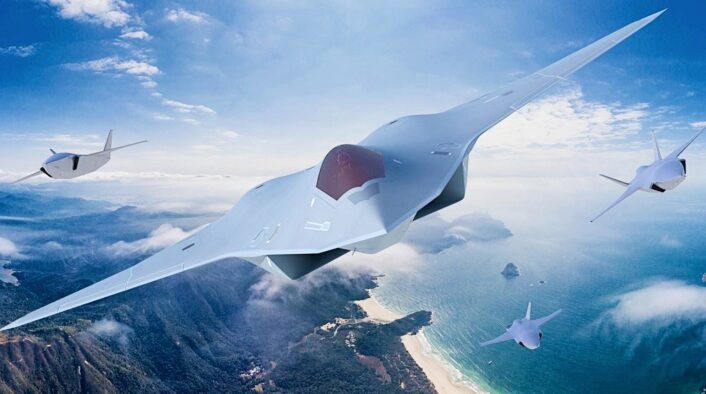
Hunter highlighted the networking capabilities which will be included in the F-47, based on a common systems architecture. This architecture might be in common with the Navy, as Hunter mentioned that it will make the F-47 and F/A-XX “seamlessly” interoperable. The two aircraft will share a number of common systems.
Kendall further added that the government will have more control on the program compared to the F-35. “We’re not a prisoner of a prime [contractor], basically, for upgrades and for competing for modular components that can be added to replace other components as the life of the aircraft goes on,” said Kendall.
The former secretary then provided details about the causes of the NGAD pause. “The one that led to the pause initially was we just didn’t have enough money,” said Kendall. “We just couldn’t do it unless we were going to be given more money, and there was no place to trade off left within the Air Force to fund it.” In fact, Kendall explained that completing the development will take at least another $20 billion.
The second cause was the evolution of the CCA program, as the service needed to make sure if it was critical to fill the penetrating counter air role and the quarterback role to the same degree. The review determined that the new aircraft will be a key element to achieving air superiority in a future high-end war.
Kendall defined the last cause as questions about “opportunity cost,” and whether the Air Force would need to leave other programs to focus on NGAD. In fact, the former Secretary said counter-space capabilities and improved base defenses are equally important to sustain high-end war in the Indo-Pacific. “If we leave the joint force vulnerable to targeting from space by the Chinese, and if we leave our bases vulnerable to attack, the F-22s, the F-35s, and the F-47s will never get off the ground,” said Kendall.
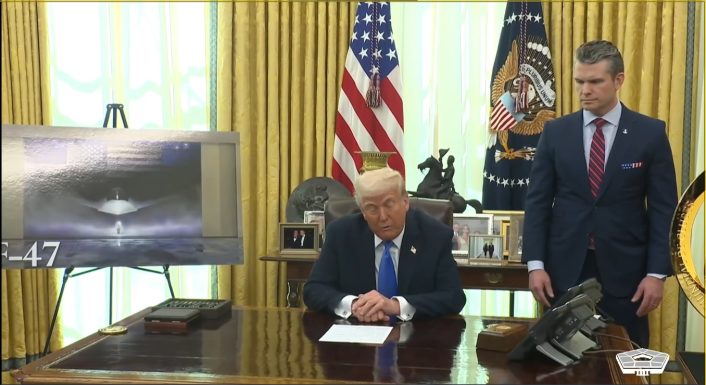
Anyway, according to Kendall, there is no indication that the F-47’s design has been changed following the review and, since he left the final decision to the next administration, he is unaware of any changes they made or are planning to make.
There was a good competition between Boeing and Lockheed Martin, and both presented viable designs but, at the same time, very different. In fact, while a contractor may have been more cautious, the other might have been more bold, according to Hunter.
Both designs are “quite creative,” said Hunter. Kendall further described them saying “These are new designs. They’re aggressive designs. They’ve got a lot of new technologies [that] are going to be integrated together.”
Regarding the price, Kendall said the F-47 cost might be at least twice the price of an F-35, or in the $160 million to $180 million range. This would be in line with the former Secretary’s comments about a price of “hundreds of millions of dollars.”
Last, but not least, the F-47 might be only the first step of NGAD. In fact, in a move which would be similar to the CCA program, Kendall said the F-47 might be “Increment 1” of NGAD, possibly hinting at a new strategy which would replace the aircraft after few years as new technologies are available, instead of mid-life updates to have the aircraft in service for 30-40 years.

